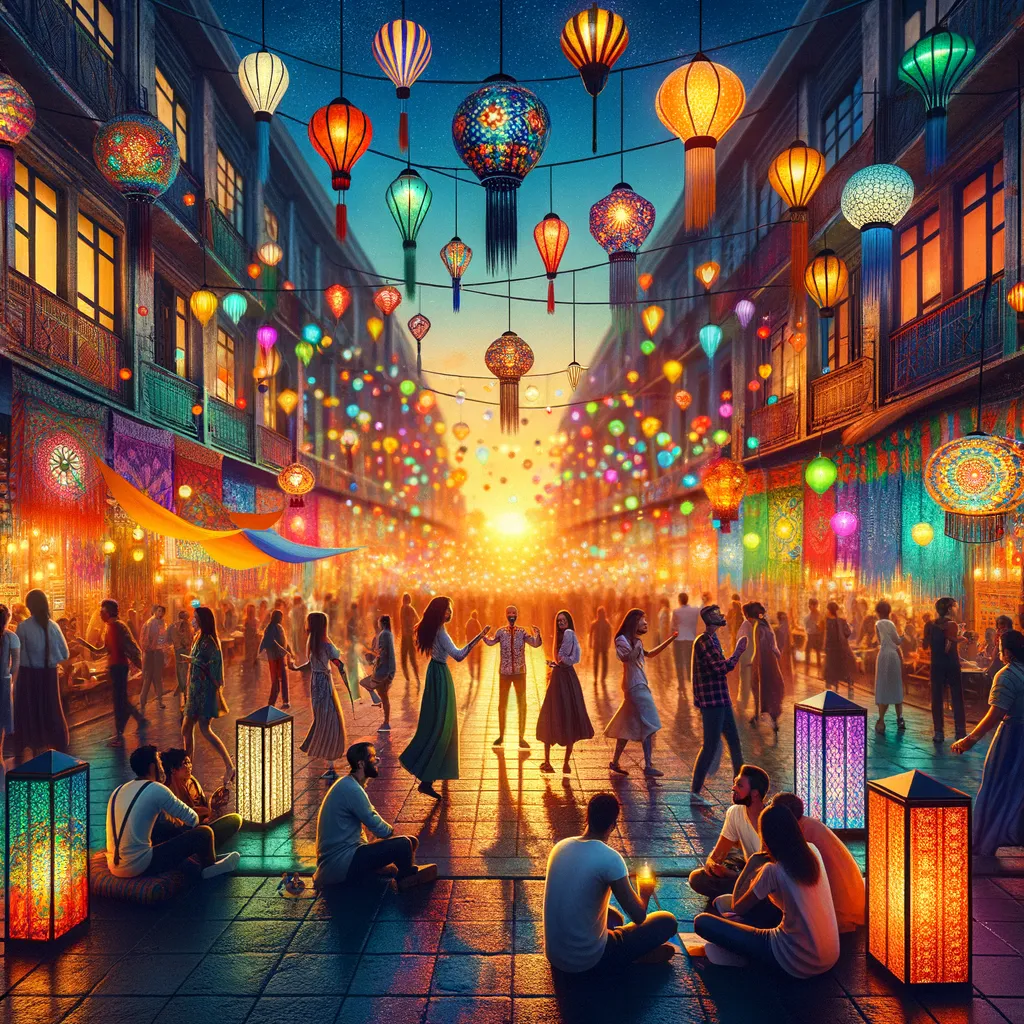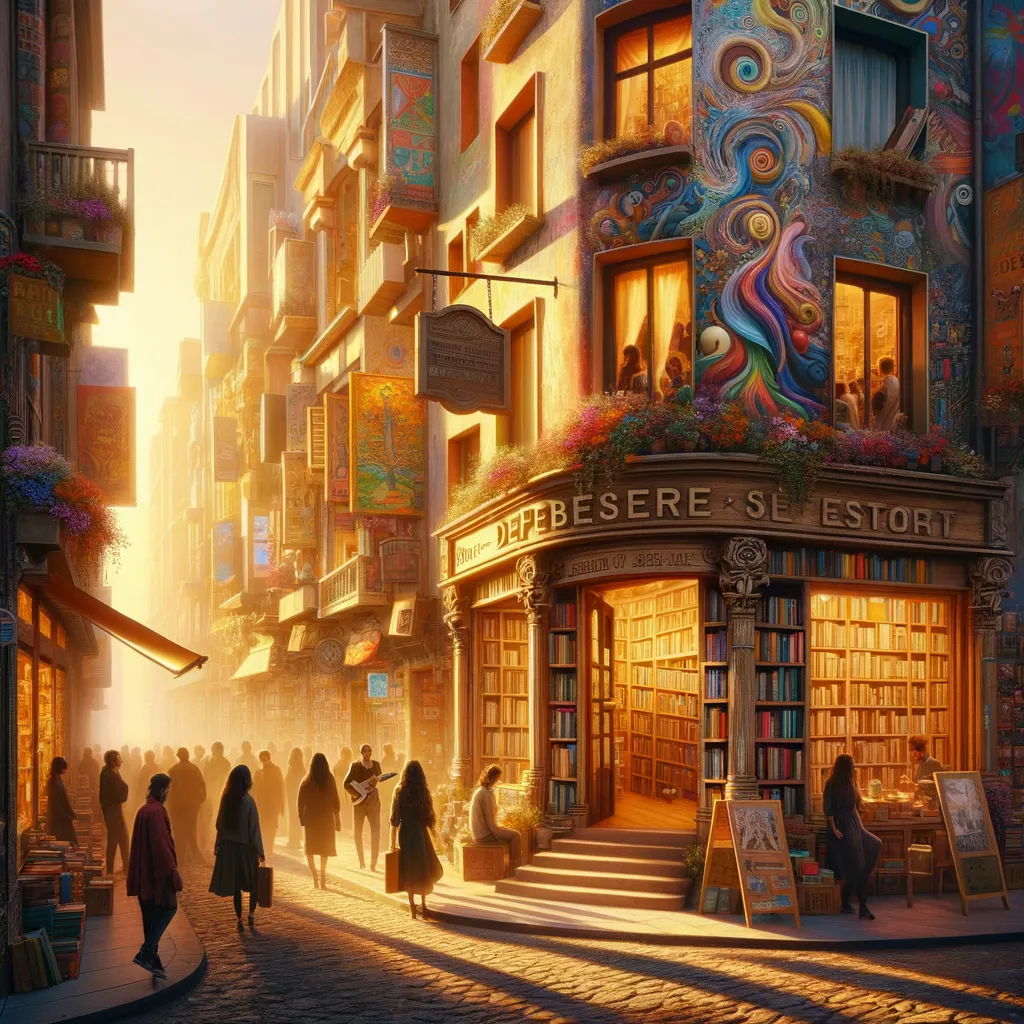A Hidden Holiday Emerges: The Spark of Unity Day
In the heart of a winter’s chill, a city shrouded in gray sparked a transformative vision: a day devoted to unity and empathy. Thus, Unity Day was born, a celebration designed to dissolve barriers and ignite warmth through shared stories, art, and music, transforming the streets into vibrant canvases of compassion. As twilight approached, the Lantern Walk emerged, illuminating the paths of strangers turned friends, uniting them in a gentle glow of understanding and reflection. The unexpected joy of “Empathy Challenges” invited communities to step beyond their comfort zones, revealing the richness of diverse experiences and fostering genuine connections. This day, overflowing with storytelling and camaraderie, became a beacon of hope, inspiring a movement that extended beyond a single celebration, urging society to embrace the beauty of shared humanity every day.
In the memory of December 12, 2016, I found myself wandering through the remnants of a city that had once thrived with color and warmth but now lay cloaked in a persistent gray. The chill in the air seemed to seep into my bones, but a flicker of something extraordinary ignited within me. It was a vision, an idea that emerged from the shadows—a holiday, unlike any other, dedicated to the spirit of human connection and the power of empathy. This day would be known as “Unity Day,” a celebration to honor the bonds that weave us together in an often-fractured world.
Unity Day would unfold in the heart of winter, a season often associated with solitude and reflection. It would be a day when the barriers that separate us would dissolve, replaced by a collective warmth that radiates from shared stories and experiences. Towns and cities would come alive with vibrant displays of art, music, and dance, each element representing the rich tapestry of cultures that coexist within our communities. Streets would transform into canvases, where murals depicting themes of compassion and understanding would emerge, inviting passersby to pause and reflect.
As twilight descended, a remarkable tradition would take shape: the Lantern Walk. Each participant would carry a lantern, a symbol of hope, illuminating the path toward greater understanding. The soft glow of the lanterns would create a river of light, flowing through neighborhoods, parks, and public squares. It would be a moment of collective introspection, where silence would speak volumes, and hearts would open to the stories of others. Strangers would become friends, united by the shared experience of walking together, illuminating the darkness that often shrouds our differences.
In a surprising twist, Unity Day would also encourage a playful spirit. Communities would organize “Empathy Challenges,” where participants would engage in activities designed to foster understanding. From cooking a dish from a different culture to sharing a personal story that shaped their identity, these challenges would invite individuals to step outside their comfort zones. The unexpected joy of discovering something new about oneself and others would create an atmosphere of camaraderie, making the day not just about recognition but genuine connection.
As night fell, the highlight of Unity Day would emerge: the Storytelling Circle. Here, in a sacred space, people would gather to share their narratives, weaving a rich tapestry of experiences. The act of storytelling would transcend barriers, offering insights into lives that may seem vastly different yet share profound commonalities. The air would buzz with emotion, laughter, and sometimes tears, as the bonds of humanity were reaffirmed in each tale told. It would serve as a reminder that each of us carries a universe within, waiting to be explored.
But Unity Day would not just be a one-day affair. The spirit of the celebration would linger long after the lanterns were extinguished and the stories shared. Communities would be encouraged to continue the dialogues sparked on that day, initiating projects and initiatives aimed at fostering ongoing understanding and cooperation. This would not be a fleeting moment of connection, but rather the beginning of a movement, a commitment to empathy that would ripple through the fabric of society.
As the sun set on December 12, 2016, the vision of Unity Day felt more like a revelation than an idea. It was a clarion call to embrace our shared humanity, to recognize that while we may come from different walks of life, our hearts beat in a similar rhythm. The layers of this celebration—art, stories, challenges—would serve as a reminder that connection is not just a luxury but a necessity for a flourishing society.
In a world often divided by fear and misunderstanding, the inception of Unity Day would offer a beacon of hope, a chance to rediscover the joy of togetherness. It would be a day to acknowledge the struggles we face while celebrating the triumphs that arise from unity. The unexpected beauty in our differences would shine brightly, creating a mosaic of experiences that enrich our lives and strengthen our communities.
As the vision solidified in my mind, I realized that this holiday was not just a celebration but an invitation to all. It beckoned us to reflect on the ways we connect and empathize with one another. What if we dedicated a day to truly see each other, to listen with open hearts, and to embrace the rich diversity that surrounds us? In that moment of clarity, a single question emerged: How might our lives transform if we chose to celebrate our shared humanity every day?
Amidst the gray remnants of a once-vibrant city, a vision of connection ignites the spirit, illuminating the path toward unity through shared stories and the warmth of empathy.



